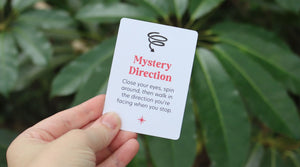Welcome to the Animal Tracker Adventure! Are you ready to become a wildlife detective? Let’s explore the great outdoors and look for signs of animals!
Why Look for Animal Signs?
Tracking animals teaches you about their habits and habitats. It helps you connect with nature and understand how different creatures live around you.
Step 1: Prepare for Tracking
- Choose Your Spot: Find a place known for wildlife, like a forest, park, or nature reserve.
- Gather Your Tools: Bring a magnifying glass, notebook, and pencil to help you investigate!
Step 2: Look for Signs
- Search for Tracks: Look on the ground for footprints or trails. Can you tell what animal made them?
- Check for Droppings: Animal droppings can tell you what they eat. Take a close look (from a safe distance) to see if you can identify the animal!
Step 3: Follow the Signs
- Track the Clues: Once you find some signs, try to follow them. Where do they lead? Look for more evidence along the way.
- Observe Carefully: Be quiet and still—wild animals are often more active when it’s quiet.
Step 4: Take Notes and Share
- Document Your Findings: Write down or draw what you discover in your adventure notebook. What animal do you think it is? What did you learn about its habits?
- Share Your Discoveries: Tell your family or friends about what you found. Maybe you can even create a little wildlife presentation!
Safety Tips:
- Stay on paths and avoid disturbing wildlife. Observe from a distance!
- Always wash your hands after handling anything in nature.
Fun Facts:
- Did you know that animal tracks can tell you a lot about an animal’s size, speed, and behaviour?
- The coyote can travel up to 40 miles per hour when running!
Wrap Up Your Adventure
Congratulations, Animal Tracker! You’ve followed the signs of wildlife and learned about the creatures that share our world. Keep exploring, and who knows what amazing animals you’ll discover next!


